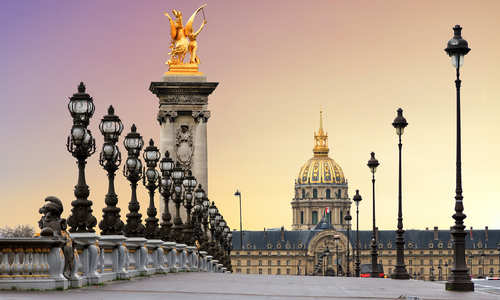Europe tailor-made holidays
Overview
A hotbed of art, culture and creativity, with mesmerising landscapes and islands and coastlines host to golden beaches and fabulous resorts, a holiday to Europe is hard to beat. Explore the best of the continent with our experts, who'll be on hand to tailor-make your perfect European escape.
With the wealth of world-class cities and experiences here, there's no way to tour our neighbouring continent without being awed by the rich heritage and outstanding landscapes that you'll discover. Of course, the perennial favourites such as France, Italy, Spain and Portugal, continue to dazzle visitors from all corners of the world. But there are also plenty of off-the-beaten track options as well.
Indeed, alternatives to those tried and tested classics include the likes of Croatia, whilst rising stars starting to garner more attention include Montenegro, Iceland and the Scandinavian destinations of Finland, Norway and Sweden.
With landscapes as varied as the Alps, the beaches of the Mediterranean, the fjords of Norway, the Greek islands, Lapland in Scandinavia and the volcanoes of Iceland, there truly is something for everyone.
Popular countries in Europe
Essential experiences in Europe

Ride the rails across Europe on iconic routes trains such as the Venice Simplon-Orient-Express and the Golden Eagle to discover stunning landscapes and historic cities. And, it's all paired with the very best onboard service and comfort.

With so many seas and long stretches of coast, Europe inevitably has some brilliant beaches, especially in Croatia, France, Greece, Italy, Spain and Turkey. Combine a beach holiday here with a city break or excursion to really get to know a place though.

Renowned for its history and culture, Europe also has a wealth of natural wonders with spectacular landscapes and stunning scenery in alomst every country on the continent.

There are wildlife holiday opportunities all over Europe, with a wide variety of countries including Croatia, France, Iceland, Norway and Sweden home to a large number of different species, just waiting to be discovered.

Europe is full of history and culture and every country has a raft of significant sites to visit or explore. Travel to France, Italy, Spain and more to uncover traditional festivals, customs, spectacular buildings and great art.

Europe has some world-class spa resorts that are ideal for a spa break in this part of the world, whether you are travelling to Croatia, France, Italy or elsewhere.

Europe has a wealth of activity and adventure holidays to choose from. So whether you're off to traditional favourites France, Italy or Spain or are looking for somewhere new to travel, you'll be spoilt for choice.
Top itineraries in Europe

With its mesmerising sculptures and thrilling excursions, a stay at Sweden's original ICEHOTEL is a truly unique experience. This classic short break includes a night in an Ice Room with two nights in warm accommodation.

Showcase the best of Norway's western fjords with stays in Oslo and Bergen bookending the boat trips and rail journeys of the classic Norway in a Nutshell tour.
Top offers in Europe

offer
Stay 3 and pay 2 special savings – Save up to £190pp
Book by: 31 March 2026
This 15th century private palazzo is a favourite among discerning travellers and Condé Nast’s judges alike.

offer
Stay 7 nights, pay 6 special savings – Save up to £275pp
Book by: 31 March 2026
Contrast the rugged volcanic beauty of the island of Vulcano with a sophisticated Italian style of a spa resort.

cruise offer
Save up to 25% on selected dates
Book by: 31 December 2025
The name Bordeaux has always evoked impressions of quiet pleasures, where the civil and the natural coexist in easy harmony, and wine lovers are free to engage their favourite pastime - savouring the world's finest wines.

cruise offer
Save up to 30% on selected departure dates
Book by: 31 December 2025
Take in northern France’s rural idyll, medieval jewels and chateau icons in all-inclusive luxury on this Uniworld small-ship river cruise.
Meet our experts
Speak to a tailor-made specialist on




















































